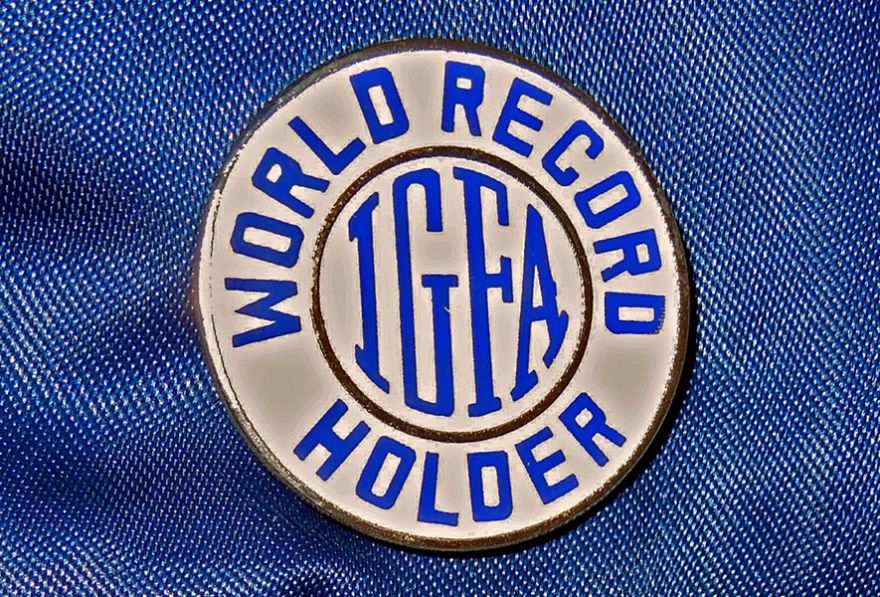The Real Deal - and That Ain't No Bull
![]() Written by
Harold
Written by
Harold
- Published in Stories and Articles
- Read 4528 times
- font size decrease font size increase font size
I have been holding off writing this for some time now - since 1997 to be precise - my rational being; why stir things up when there would be little or no chance to right what I consider to be a very egregious wrong?
The “ egregious wrong” to which I am referring is the current All Tackle World Record for Lake Trout that was recognized by both the Canadian National Fish Registry and the National Freshwater Fishing Hall of Fame in 1995, and then subsequently by the International Gamefish Association (IGFA) in 1997.
But after recently reading an excerpt from the book, Lake Trout – North America’s Greatest Game Fish outlining a “first hand account” of how this fish was caught, supposedly released and then finally certified, all the old memories came flooding back, bringing me to the point where I simply can’t hold off any longer.
To put it another way, what’s right is right – and this just isn’t right.
So let me to come directly to the point.
In my personal opinion, the previous All Tackle World Record, formally held by Rodney Harback should be restored, because based on my own research, experience and observations the fish that replaced Harback’s should not have been certified.
I’m no stranger to the process involved in having a world record catch certified, and in particular the requirements as set out by the IGFA in their International Angling Rules.
I have held as many as three IGFA line class records and in addition, was a witness to the catch when Harback landed his 66.5-pound Lake Trout in 1991.
Harback was held to the highest standards by the IGFA, and had to follow the rules to the letter in regards to completing the application, submitting all of the required photographs, line samples, witness statements, and the measuring and weighing of the fish.
In addition, as part of the IGFA certification process everyone who was present when the fish was caught and/or processed for purposes of the application, had to submit written statements of verification, together with pictures and video that we had taken at the time.
The IGFA’s International Angling Rules contain a long list of requirements that must be met in order to have a world record certified, including among other things, very specific rules regarding photographs.
According to the IGFA, photographs included with applications must contain the following information:
- The full length of the fish on the measuring device clearly showing the position of the mouth and tail. The fish may be held in position, but must be done in a manner that does not obscure the view of the fish on the tape.
- A close up showing the position of the fish's nose and tail on the measuring device.
- The angler with the fish.
- The rod and reel used to make the catch, and
- The scale used to weigh the fish.
To quote from the current International Angling Rules:
“In all cases, photographs should be taken of the fish in a hanging position and also lying on a flat surface on its side.
The fish should be broadside to the camera and no part of the fish should be obscured. The fins must be fully extended and not obscured with the hands, and the jaw or bill clearly shown. Avoid obscuring the keels of sharks and tunas with a tail rope.
When photographing a fish lying on its side, the surface beneath the fish should be smooth and a ruler or marked tape place beside the fish if possible. Photographs from various angles are most helpful.
An additional photograph of the fish on the scale with actual weight visible helps to expedite the application.”
In this instance, while there were apparently four photographers clicking away during the time this fish was on shore, if I may borrow an excerpt from the anglers own account, as it appears in the above mentioned book:
“In the excitement, all four photographers experienced difficulty, from improper film insertion, non removal of a lens cover, an extended telephoto lens that cut me and the fish in half, to a lanyard that partially obscured the picture but not the laker (a problem corrected by a photo shop.)”
Therefore, the most obvious question that comes to my mind is - were all of the required photographs, especially those involving the fish, submitted with the application particularly in view of all the aforementioned difficulties?
Questions regarding the photographs notwithstanding, initially the IGFA did not certify this catch as an All Tackle World Record, because according to their own International Angling Rules, the anglers leader, which was attached to a section of lead core line, was two feet longer than allowed for freshwater angling.
It wasn’t until two years later – yes two years – that the IGFA certified the catch as an All Tackle World Record, apparently on the basis of a further review of the anglers records and “tested line strength,” even though his line was composed of three different sections – backing, line and leader.
Not surprisingly, in view of this rather puzzling delay, Harback initiated an inquiry with the IGFA, but to the best of my knowledge he received little or nothing by way of an explanation regarding the reason(s) for their decision.
Perhaps the leader magically shrunk down to the appropriate size, or some other miracle occurred during that two-year period.
While I have a number of serious concerns about the certification process in and of itself, what did at the time and continues to bother me most about this catch was the assertion that it was a live release.
I have over thirty years of experience catching and releasing big trout on Great Bear Lake, and this experience has clearly shown me that because of the incredible amount of stress these very old fish are under once they are hooked, if you don’t get them to the boat in very short order, and then effect a quick release, their chances of survival are minimal at best.
Fish, not unlike people, don’t react well to stress.
The physical exertion of a long fight causes an oxygen deficit in the fish’s tissues, forcing the muscles to function anaerobically, or in other words – without oxygen.
This causes a lactic acid build up in the muscle tissue, which then diffuses into the blood. This acts as an acid in the blood, causing the pH level of the blood to drop, and even slight changes in pH can cause major disruptions in metabolic processes, and ultimately kill the fish.
When a fish is caught and released quickly, its blood chemistry will usually return to normal, and it will in all probability, live to fight another day.
According to the angler’s own account, on its initial run the fish tore off almost 300 yards of line. He then had to travel over a mile from where he hooked it, “…before I could even begin to get any line back…” and then subsequently fought the fish for well over an hour before it was finally netted.
It took several more minutes to bring it to shore, where the fish was apparently put back into the water for a short period, then hauled out of the water again, where in order to comply with the rules to potentially qualify for a world record, it was weighed, measured, photographed and finally released to fight another day.
In a nutshell, what we are being asked to believe is that this supposedly huge fish, which would have likely between 70 and 100 years old, after being put under tremendous stress for what appears to be at least an hour and one half, - with a good portion of that time being spent out of the water - just swam away after being revived for “several minutes.”
Give me a break.
Needless to say I was extremely skeptical about this claim, so shortly after the fish was certified, I contacted the Department of Ichthyology and Herpetology at the Royal Ontario Museum for a second opinion.
The department has an unimpeachable worldwide reputation for excellence, and would clearly be in the best position possible to provide me with an informed, objective and unbiased opinion.
I spoke directly to an ichthyologist within the department, who fortunately was very familiar with the physiology of Lake Trout, including those found in Great Bear Lake.
After providing him with the details of the catch, including the time needed to land the fish and the amount of time it was likely out of the water while being transported to shore and otherwise being handled for purposes of weighing, measuring and photographing, his opinion was that under the circumstances as described, a fish of that size and probable age would not have survived the ordeal.
No hesitation or equivocation whatsoever, just an emphatic - no way.
Someone can correct me if I’m wrong, but it’s highly unlikely any of the organizations that certified this catch made any serious inquiries into the assertion that this was a live release, because if they knew – or cared - anything at all about the age and physiology of the trout in Great Bear Lake – particularly the really big ones - all manner of alarm bells should have gone off.
Now I don’t expect that everyone is going to agree with the way I see this.
After all, the organizations that certified this catch appear to have good reputations, ones that are important to uphold if they wish to remain credible; so what could possibly be in it for them to certify a catch that has what I believe to be so many unanswered questions surrounding it?
In addition, I have no beef with anyone who chooses to accept that this is the legitimate All Tackle World Record, because the fact is, when you look in the record books – there it is – so I guess you could say, “it is what it is.”
Rodney Harback has been a good friend for over 30 years; therefore some might be inclined to say that this is nothing more than “sour grapes” on my part, or for that matter his because he lost the record.
If you happen to hold that view, you’re certainly entitled to your opinion, but it couldn’t be further from the truth, and for the record, Rodney has no idea I’m even writing this, and will see it for the first time once it’s been published.
And finally, the angler who caught the fish is no longer with us, so you may feel that it’s not fair to publish this now, because he is unable to respond directly to the issues I have raised.
To be absolutely clear, I’m not remotely interested in getting into a debate, or any other type of ongoing back and forth with anyone about this.
I’m merely laying out the facts as I understand and have interpreted them - many of which come from the anglers own account – and am raising what are in my view, a number of legitimate questions and concerns that call into question both the certification process, and the assertion that it was a live release.
Everyone is of course free to interpret the facts regarding this catch in any way they see fit, and then come to their own conclusions.
But as I said earlier;
What’s right is right – and this simply isn’t right.
Not in my book anyway…









